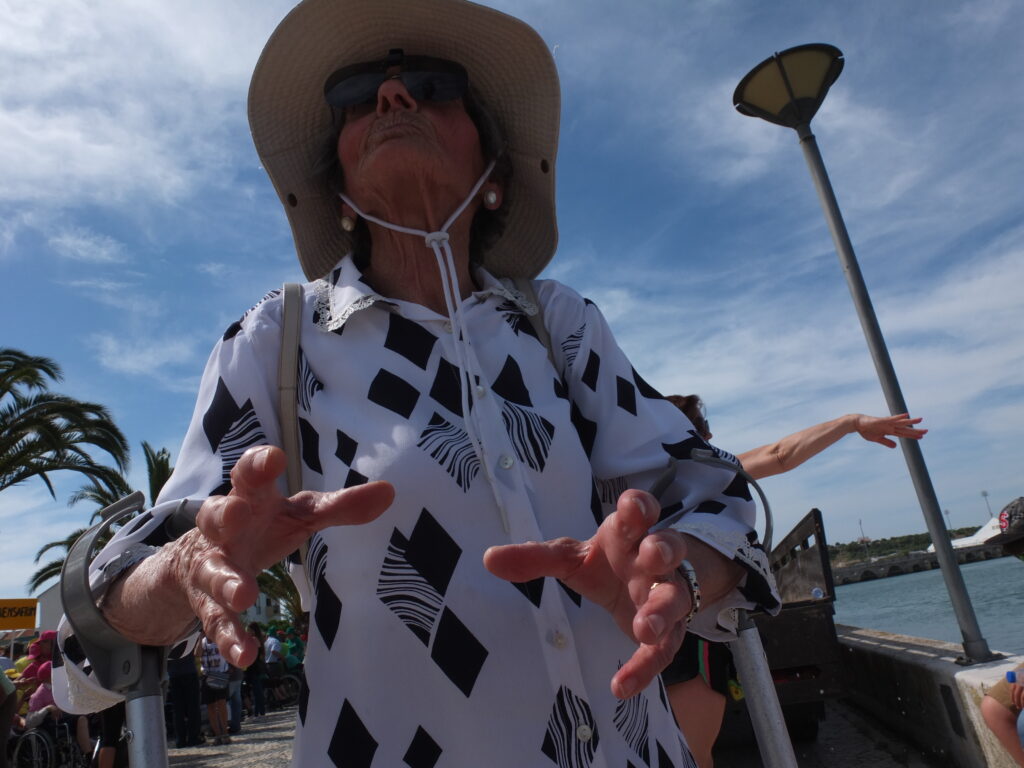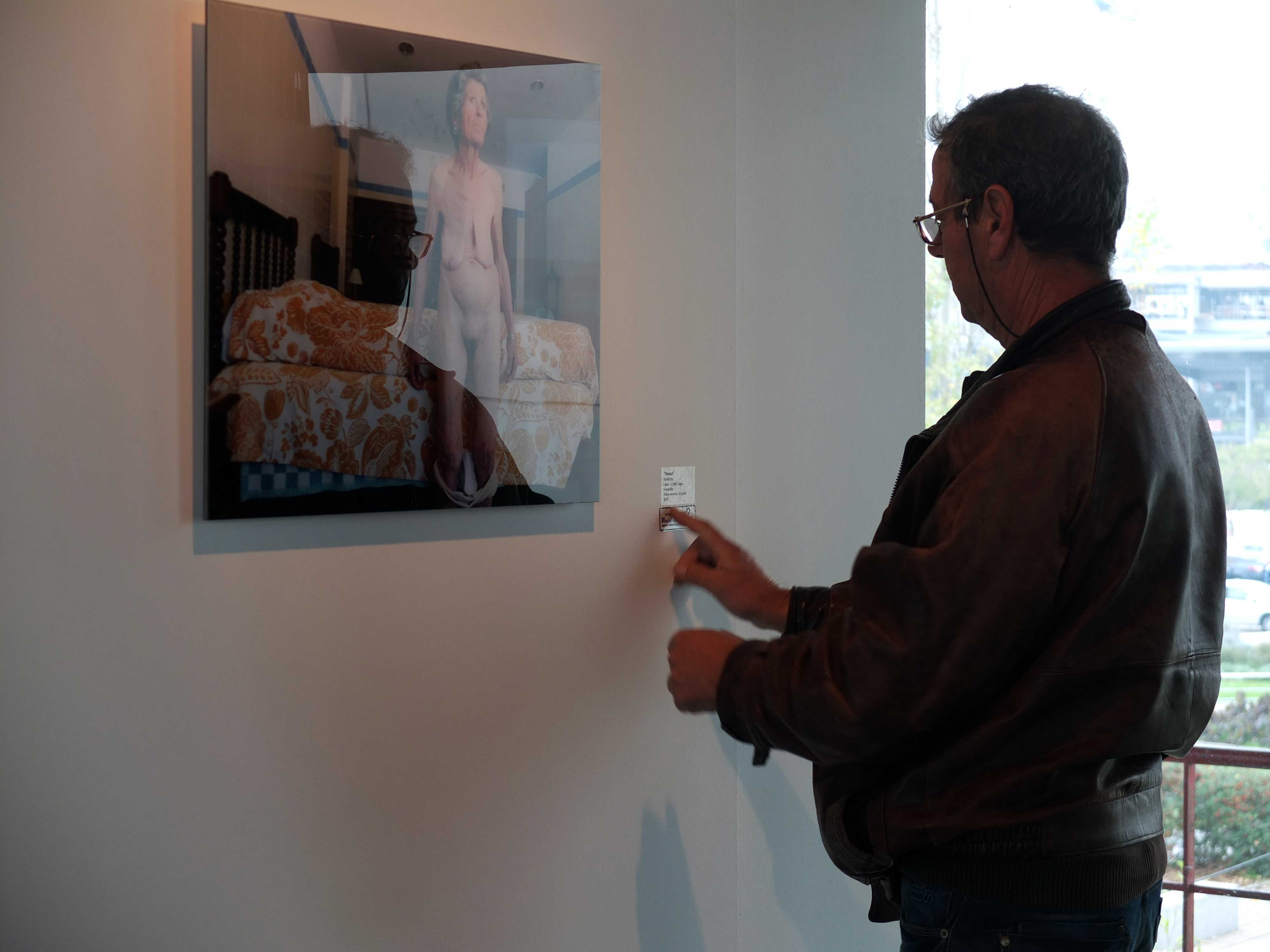
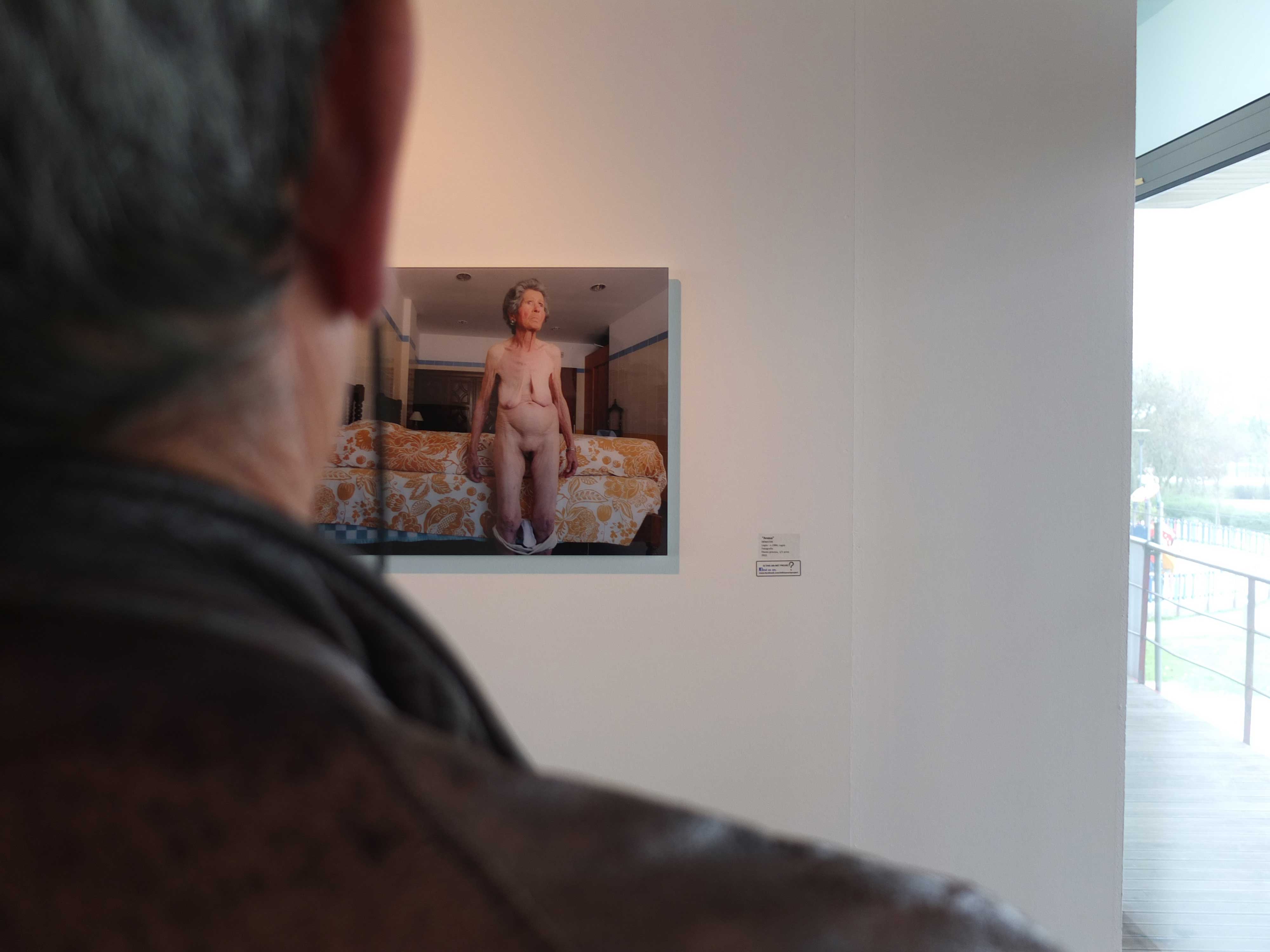
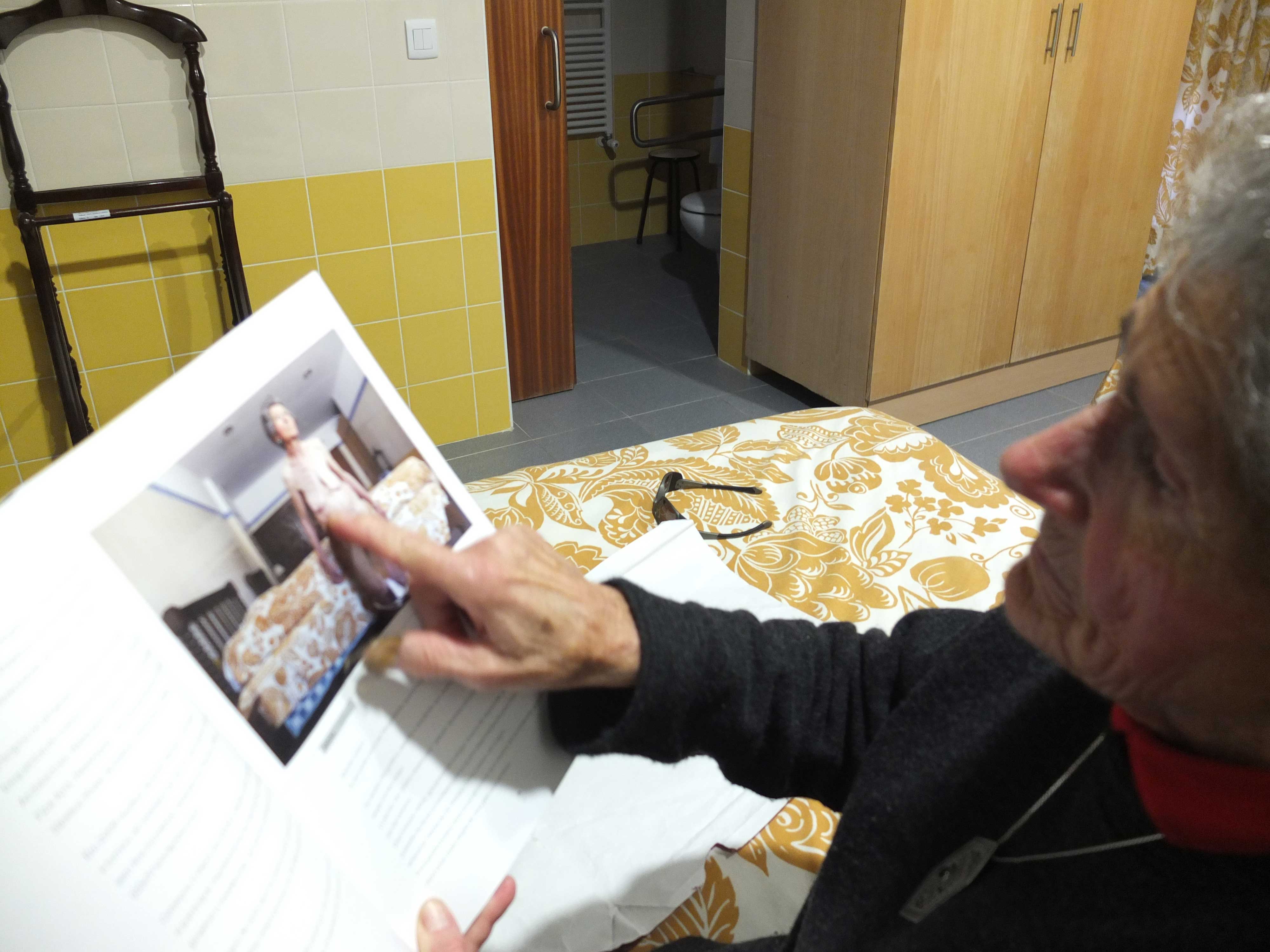
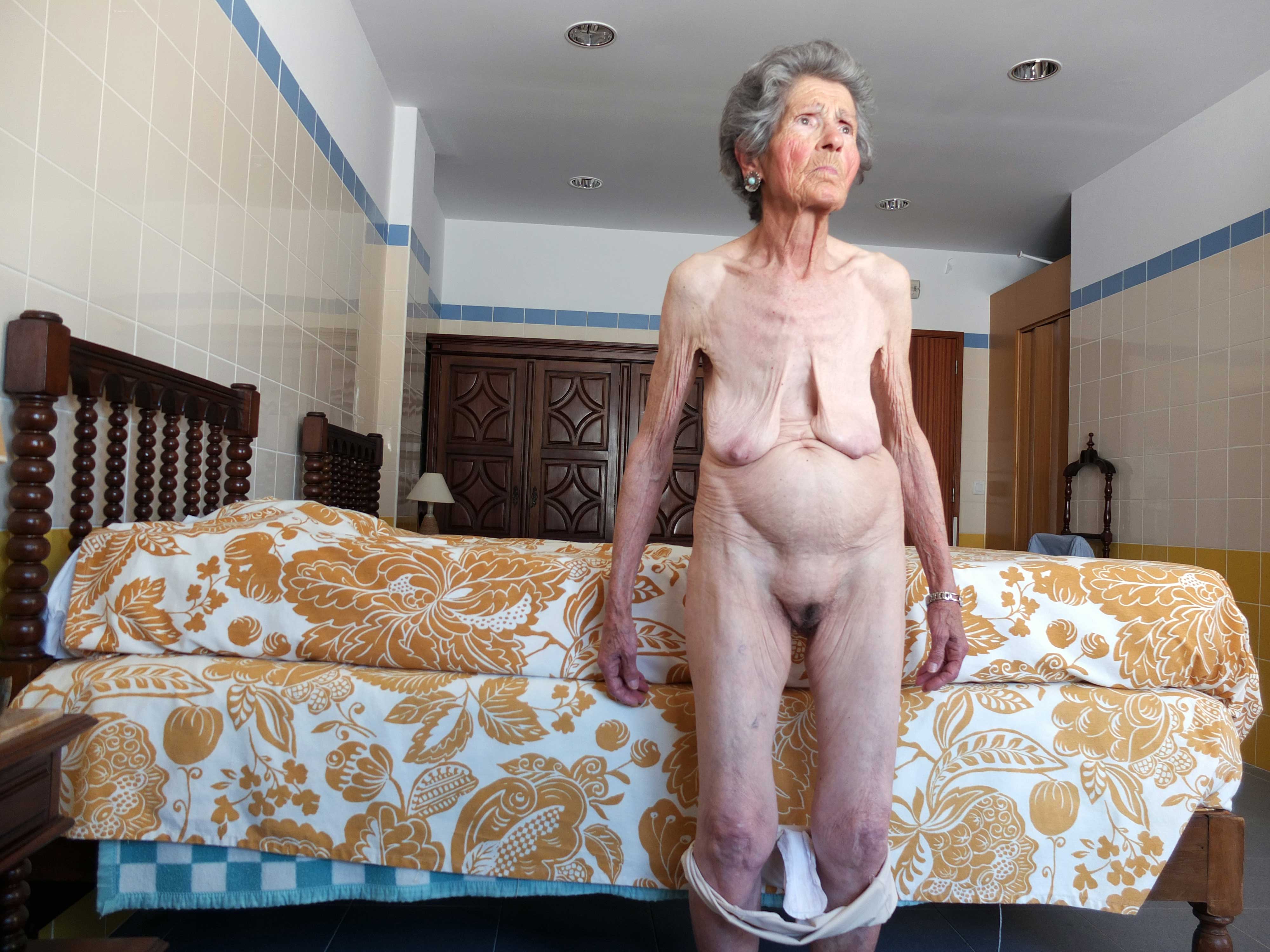
Versão português:
Anosa é um happening imersivo que explora o profundo deslocamento de uma avó no contexto de um mundo contemporâneo em rápida evolução, onde o familiar se torna alienígena e a passagem do tempo intensifica uma sensação de medo. A obra navega pelo terreno emocional do envelhecimento, da memória e da experiência desorientadora de viver numa sociedade que frequentemente marginaliza os mais velhos.
A fotografia: Ela posou como pediu — nua, rígida, sem adornos. Não para ser objetificada, mas para tornar visível o que sempre fora escondido. Dizia-o muitas vezes, sem dramatismos, por vezes de forma impositiva: nunca quis sexo, nunca o desfrutou. O marido forçou-a. Dessa violência nasceram sete filhos. Esta imagem foi dirigida pelo neto, não para estetizar o sofrimento dela, mas para encarnar essa história — com verdade, sem indulgência. Não é uma homenagem, mas um acerto de contas. O seu corpo aqui não é reclamado, é revelado tal como foi vivido: sobrecarregado, obediente, e, finalmente, incapaz de mentir.
Anosa is an immersive happening that explores the profound displacement of a grandmother in the context of a rapidly evolving contemporary world, where the familiar becomes alien, and the passage of time intensifies a sense of fear. The work navigates the emotional terrain of aging, memory, and the disorienting experience of living in a society that often sidelines the elderly.
The photograph: She stood as she asked- nude, rigid, unflattering. Not to be objectified, but to make visible what had always been hidden. She said it often, without dramatics, sometimes in an imposing way: She never wanted sex, never enjoyed it. Her husband forced her. Seven children came from that violence. This image was directed by her gradson, not to aestheticize her suffering, but to embody that story- truthfully, unsparingly. It is not a tribute, but a reckoning. Her body here is not reclaimed, it is revealed as it was lived: burdened, obedient, and finally, unwilling to lie.

